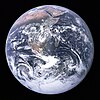Natural Environment Research Council
| File:Natural Environment Research Council.jpg | |
| Abbreviation | NERC |
|---|---|
| Formation | 1965 |
| Type | Non-Departmental Government Body |
| Purpose | Funding of UK environmental science research |
| Headquarters | Polaris House |
| Location |
|
Region served | |
| Prof. Duncan Wingham | |
| Sir Anthony Cleaver | |
Main organ | NERC Council |
Parent organization | |
| Affiliations | AHRC, BBSRC, EPSRC, ESRC, MRC, RCUK, STFC, TSB, UKSA |
| Budget | £400 million |
| Website | www.nerc.ac.uk |
The Natural Environment Research Council (NERC) is a British Research Council that supports research, training and knowledge transfer activities in the environmental sciences.
History
NERC began in 1965 when several environmental (mainly geographic) research organisations (including Nature Conservancy which became the Nature Conservancy Council in 1973 and was divided up in 1991) were brought under the one umbrella organisation. When most research councils were re-organised in 1994, it had new responsibilities - Earth observation and science-developed archaeology. Collaboration between research councils increased in 2002 when Research Councils UK was formed.
Chief executives
- Sir John Lawton 1999-2005
- Professor Alan Thorpe 2005-2011
- Dr Steven Wilson (Acting) - 2011-2012
- Professor Duncan Wingham - from 1 January 2012 (BIS announcement)
Organisational structure
The council's head office is at Polaris House in Swindon, alongside the other six Research Councils. NERC's research centres provide leadership to the UK environmental science community and play significant and influential roles in international science collaborations.
| Insignia | Organisation |
|---|---|
|
|
British Antarctic Survey |
|
|
British Geological Survey |
| Centre for Ecology and Hydrology | |
| National Centre for Atmospheric Science | |
|
|
National Centre for Earth Observation |
| National Oceanography Centre |
It also supports a number of collaborative centres of excellence and subject-based designated Environmental Data Centres for the storage and distribution of environmental data.
Mission
The Natural Environment Research Council delivers independent research, survey, training and knowledge transfer in the environmental sciences, to advance knowledge of planet Earth as a complex, interacting system. The council's work covers the full range of atmospheric, Earth, biological, terrestrial and aquatic sciences, from the deep oceans to the upper atmosphere, and from the geographical poles to the equator.
NERC's mission is to gather and apply knowledge, create understanding and predict the behaviour of the natural environment and its resources, and communicate all aspects of the council's work. The British Meteorological Office is not part of NERC.
Airborne Research and Survey Facility

The NERC Airborne Research and Survey Facility (ARSF) collects and processes remotely sensed data for use by the scientific community. The data are collected by various instruments on board a Dornier 228 research aircraft based in Cambridge, UK. These instruments currently include a Leica ALS50-II LIDAR and two hyperspectral sensors, SPECIM AisaFenix and AisiaOwl.[1] Meteorological data are also collected in-flight.
Processing is performed by ARSF-DAN (Data Analysis Node) at Plymouth Marine Laboratory.
See also
- Conservation biology
- Conservation ethic
- Conservation movement
- David Carson (climatologist)
- Ecology
- Ecology movement
- Environmentalism
- Environmental movement
- Environmental protection
- Habitat conservation
- List of environmental organizations
- Natural environment
- Natural capital
- Natural resource
- Renewable resource
- Royal Research Ship
- Sustainable development
- Sustainability
References
- ^ "ARSF Sensor Information". arsf-dan.nerc.ac.uk. Retrieved 2015-10-28.
External links
- Official website
- British Antarctic Survey (BAS)
- British Geological Survey (BGS)
- Centre for Ecology and Hydrology (CEH)
- National Centre for Atmospheric Science (NCAS)
- National Centre for Earth Observation (NCEO)
- NERC Centre for Population Biology
- National Oceanography Centre (NOC)
- Research Councils UK (RCUK)
- ARSF homepage
- ARSF-DAN Wiki
- Conservation in the United Kingdom
- Organisations based in Swindon
- Organizations established in 1965
- Research councils
- Science and technology in the United Kingdom
- Department for Business, Innovation and Skills
- Non-departmental public bodies of the United Kingdom government
- 1965 establishments in the United Kingdom


